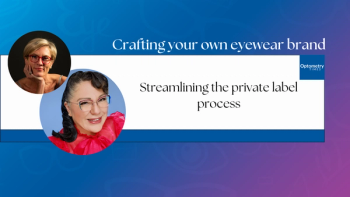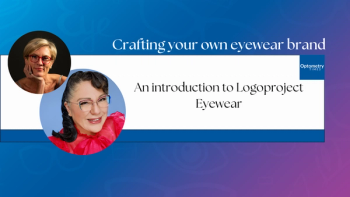
G360 2023: The fact vs. fiction of OCT test results
Danica Marrelli, OD, FAAO, shares key highlights from her presentation, which she presented during the Glaucoma 360 meeting held this year in San Francisco.
Danica Marrelli, OD, FAAO, clinical professor and assistant dean of clinical education at the University of Houston College of Optometry, sat down with Optometry Times®' editor Kassi Jackson to share key takeaways from her Glaucoma 360 presentation, "Glaucoma Test Results: Fact vs Fiction," which she presented this year in San Francisco.
Editor's note: This transcript has been edited for clarity.
Jackson:
Hi, everyone. I'm Kassi Jackson with Optometry Times and I'm joined today by Dr. Danica Marrelli, clinical professor and assistant dean of clinical education at the University of Houston College of Optometry. She's here to share highlights from her discussion titled, "Glaucoma test results: fact versus fiction," which she's presenting during the 2023 Glaucoma 360 meeting held this year in San Francisco. Thank you for being here, Dr. Marrelli.
Marrelli:
It's a pleasure, thank you for having me.
Jackson:
Of course. So would you please share with us key highlights from your presentation?
Marrelli:
Yeah, you know, I chose to focus on OCT for my presentation. Because I think as optometrists, we're used to sort of saying, "Well, this visual field doesn't look so great, I'm not going to really put a lot of faith in this." But I think there's this inherent view that the OCT is an objective sort of perfect test. And while the instruments are amazing, they give us tremendous information, we still have to really use a critical eye when we're evaluating them, because they don't give us the answer, they just give us information. And we have to figure out what that information means.
Jackson:
Yeah, so what do you hope the audience took away from your talk?
Marrelli:
So I think there are several artifacts that I talked about during the presentation, which sometimes aren't really readily apparent on the printout. And so I think one thing would be to always look at the raw data—to have an open mind and kind of a keen eye looking for ways that maybe the instrument is sort of just fallen a little bit short.
So looking for those artifacts, and then also really thinking about the interpretation, particularly where it comes to the kind of red, yellow, green stoplight color indicators that something is amiss, or that everything is great, because those things can fool you. They're based on relatively small databases of what is normal or typical. And so you might have a patient that looks normal, but in fact has a problem or the opposite, where, you know, the instrument is giving you lots of reds or yellow colors, but in fact, it's just because maybe the patient's a little different, they're not necessarily diseased.
Jackson:
And why is this important for optometrists to kind of know and address and bring into their practice?
Marrelli:
I think that, again, kind of going into the idea that this OCT is the answer box, right? That's kind of a hazard of having these great instruments. And so just recognizing that your expertise and your understanding of the information could keep you from over diagnosing and could keep you from under diagnosing.
I mean, I think it's just as bad to have patients that I've said do have glaucoma that I've sentenced to a lifetime of treatment than it is to miss glaucoma. So I think both sides of that coin are bad. And we want to avoid making wrong decisions based on the information that we get from our OCTs.
Jackson:
You kind of just touched on this, but why is this important for patient care?
Marrelli:
Yeah, so patients also really, we don't want them to have the burden of treatment and the kind of burden of having an eye condition that can cause blindness, when they really don't. And the flip side of that is we really want them treated early if in fact they have early signs that might be subtle, but still visible on your OCT.
Jackson:
Wonderful. Is there anything we didn't touch on that you'd like to be sure to address?
Marrelli:
I think that one of the things—one of the particular things that I talked about, is the challenges of OCT in patients with high myopia. We know that myopia is increasing and we also know that myopia is associated with glaucoma development, but sometimes the OCTs will fall a little bit short. Myopes tend to have thin neuro fiber layer, thin ganglion cell layer. They also can have some specific patterns on those tests. And so just knowing that and knowing when to say, "Oh, I think this is just because they're myopic, or this doesn't really fall into that myopic pattern," um, can be very helpful when we're trying to sort out is this just myopia or is this glaucoma?
Jackson:
Wonderful. Well, Dr. Marrelli, thank you for your time today.
Marrelli:
Sure, thank you for having me.
Newsletter
Want more insights like this? Subscribe to Optometry Times and get clinical pearls and practice tips delivered straight to your inbox.













































.png)


